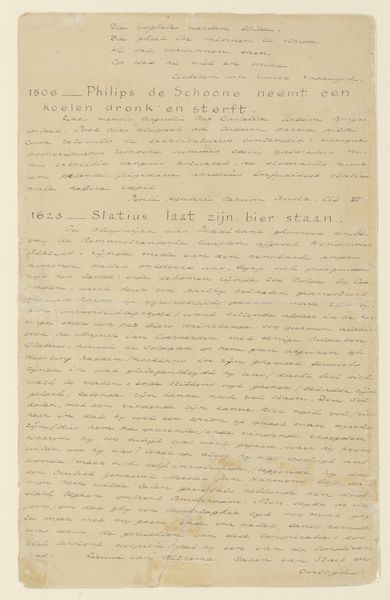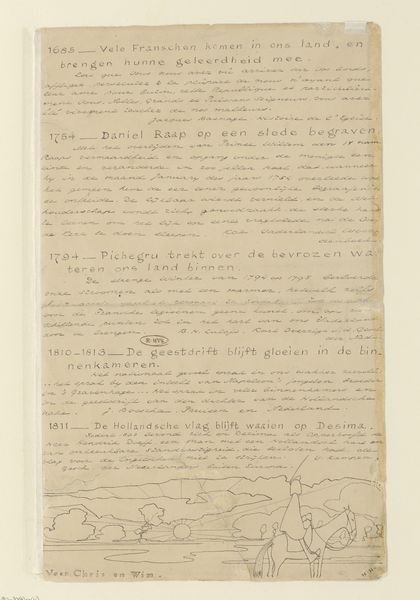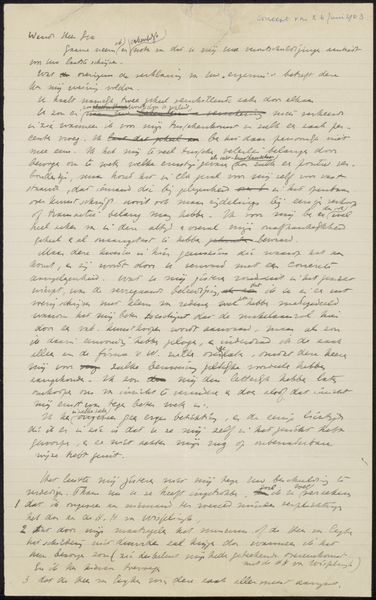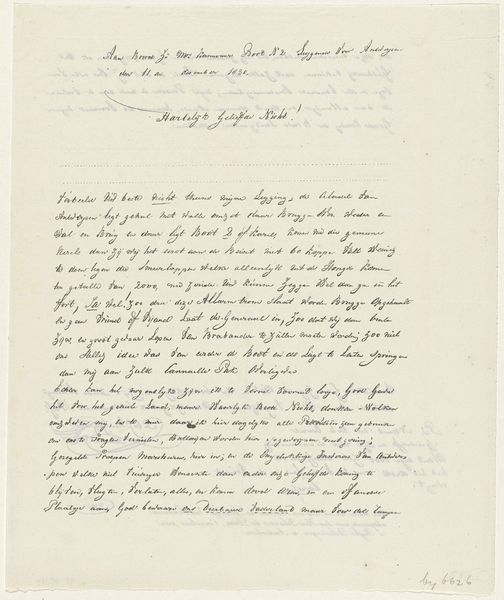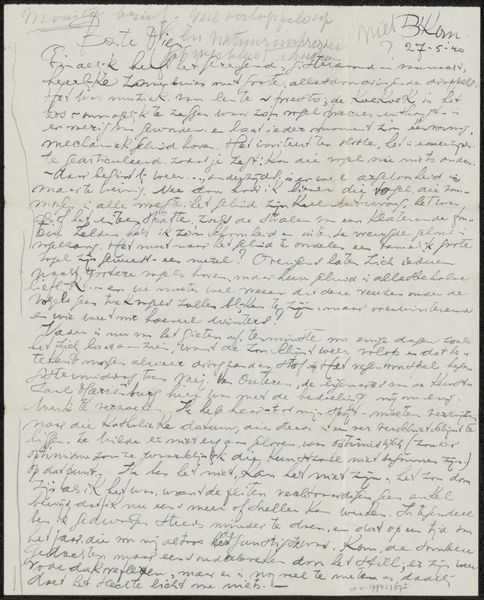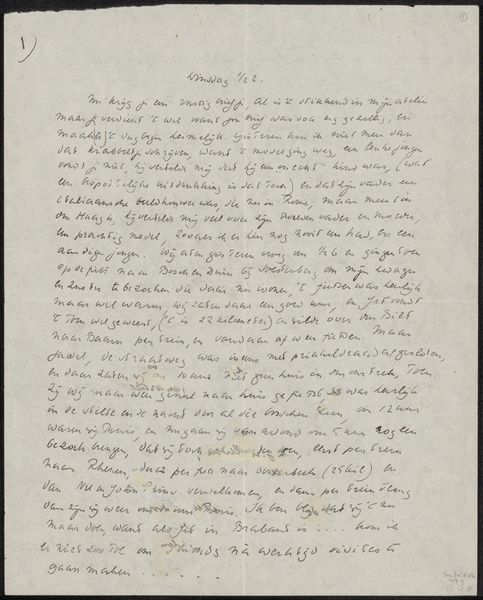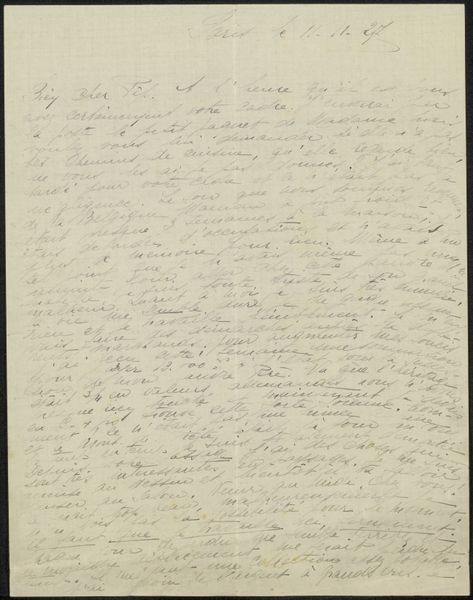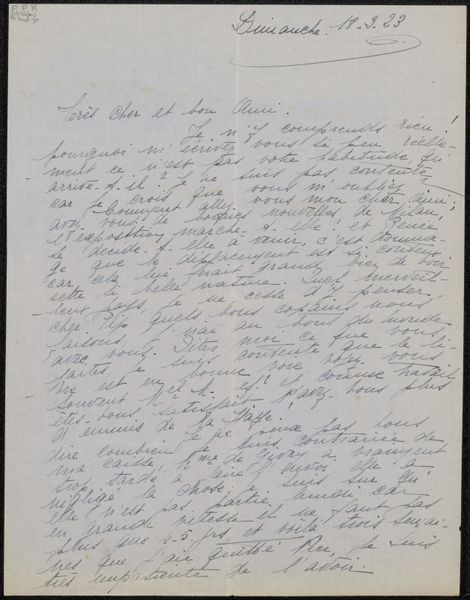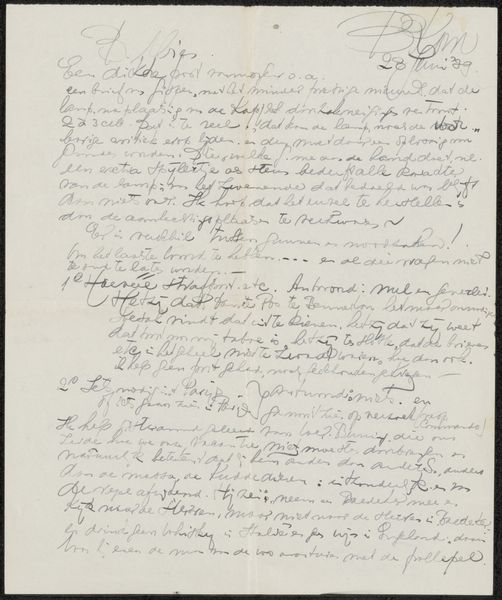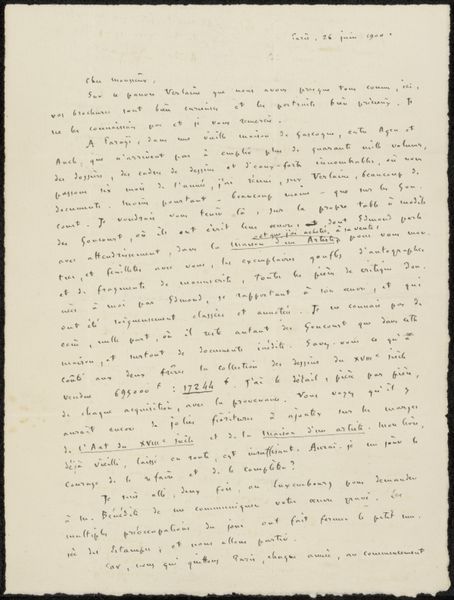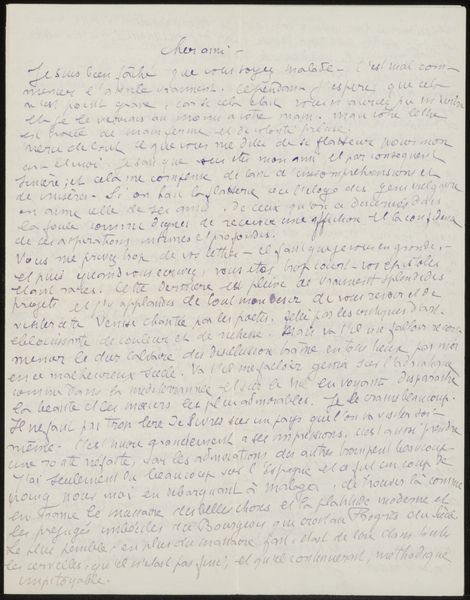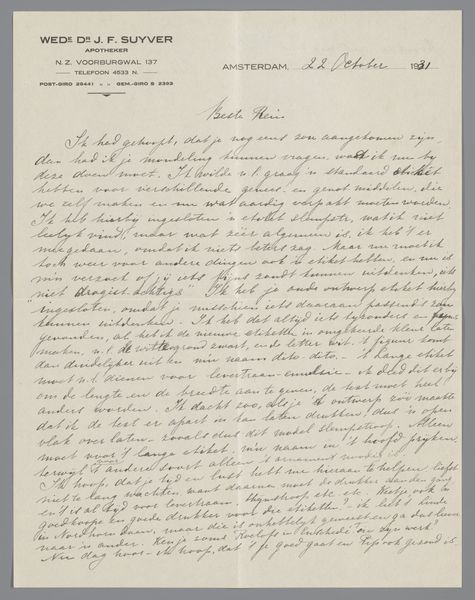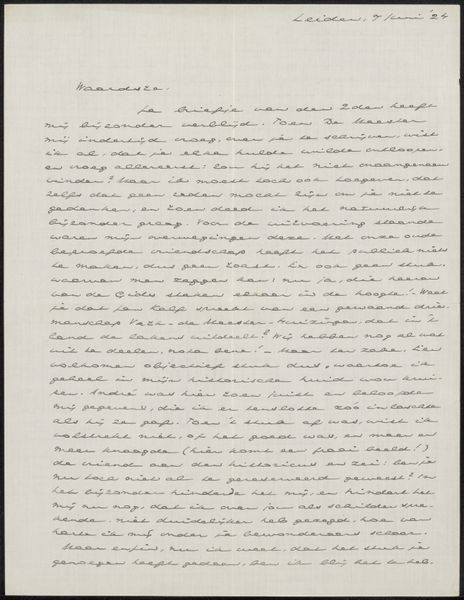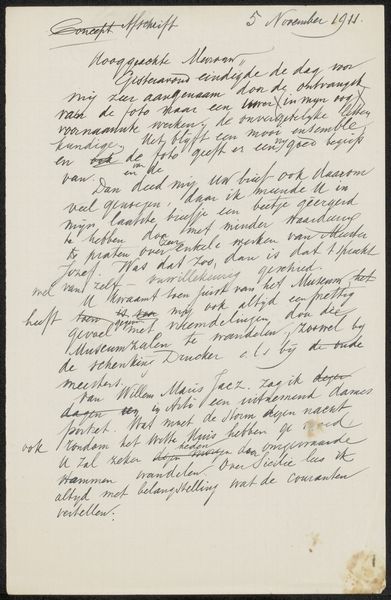
Blad met handgeschreven beschrijvingen van acht scènes uit 'Keur van gedenkwaardige tafereelen uit de vaderlandsche historiën' 1893 - 1895
0:00
0:00
drawing, textile, paper, ink
#
drawing
#
textile
#
paper
#
ink
#
folk-art
Dimensions: height 346 mm, width 210 mm
Copyright: Rijks Museum: Open Domain
Curator: What strikes me immediately is the handwritten nature of this sheet. It has a direct, almost intimate feel. Editor: I find its texture intriguing. The work, dating from between 1893 and 1895, is named “Blad met handgeschreven beschrijvingen van acht scènes uit 'Keur van gedenkwaardige tafereelen uit de vaderlandsche historiën'," which roughly translates to “Sheet with handwritten descriptions of eight scenes from 'Selection of memorable scenes from Dutch history'," comprised of drawing, textile, paper, and ink. It's essentially a textual artifact, a document. Curator: Exactly. Look at the consistent hand. It speaks to the themes of national history, but rendered here with a personalized touch. It's a folk-art interpretation of grand events, almost. Notice how the descriptions are concise, almost telegraphic in their efficiency, referencing Edward I halting the wool staple and other brief events. Editor: The content, although literally descriptive, evokes many potent images and narratives. An overlarge eel. A blooming apple tree. Each refers to cycles of life and memory as preserved and interpreted in handwriting, like rune carvings. The document’s physical nature connects it intimately with the very era it seeks to capture. Curator: I’d focus more on how it's an organizational diagram. There is a hierarchy at work; information arranged carefully on the paper. A taxonomy is revealed here: What historical moments are worth committing to paper? How are they spatially related? How does the artist present these? These aspects, I would contend, bear as much significance as the narrative moments you address. Editor: Perhaps. But in emphasizing the pure visual arrangements, you risk losing the emotional context inherent to historical events filtered through generations. Surely, these scenes meant something particular to the writer, sparking an evocative symbolic response—a resonance impossible to detach from the raw compositional decisions. Curator: Maybe we can see it as both a structure of history, a kind of symbolic archive that reflects both folk history and a singular artistic impression. Editor: Indeed, an image filled with tales ready to bloom.
Comments
No comments
Be the first to comment and join the conversation on the ultimate creative platform.
